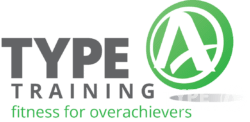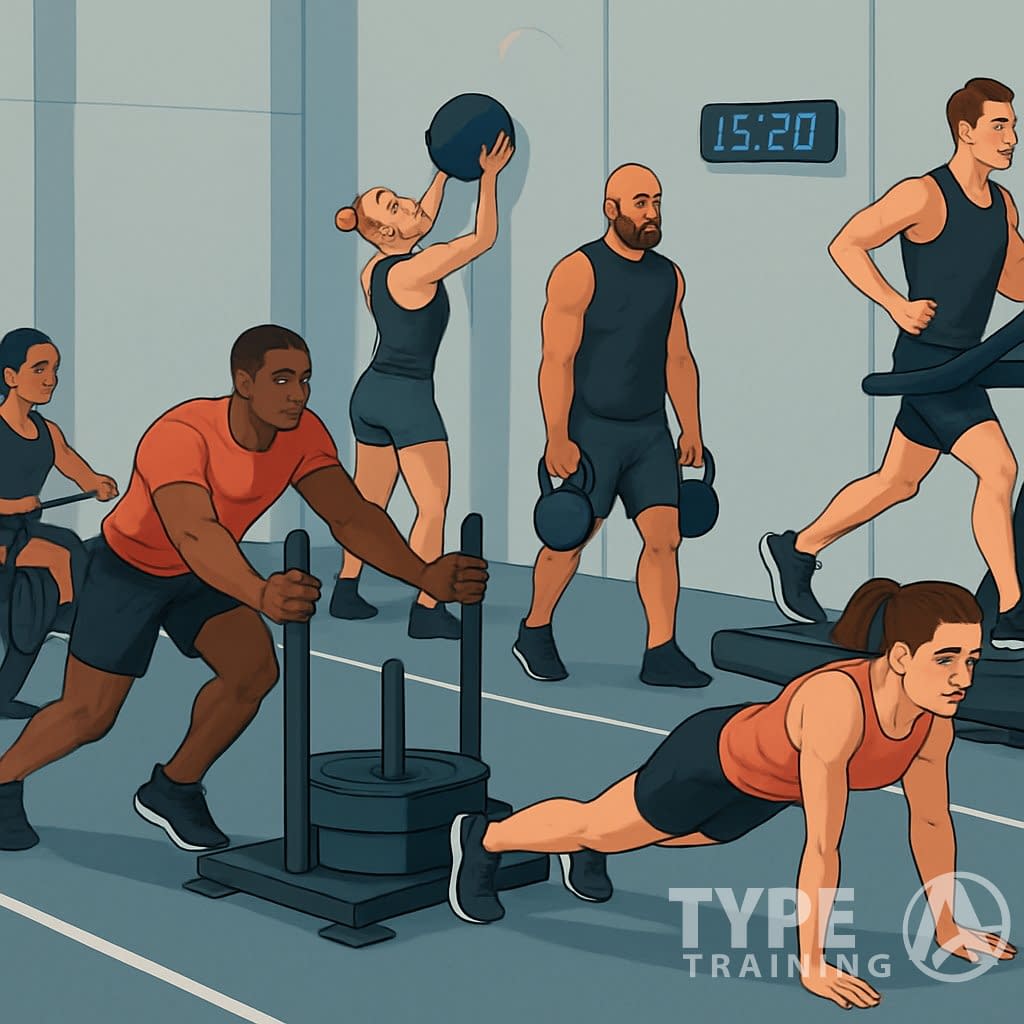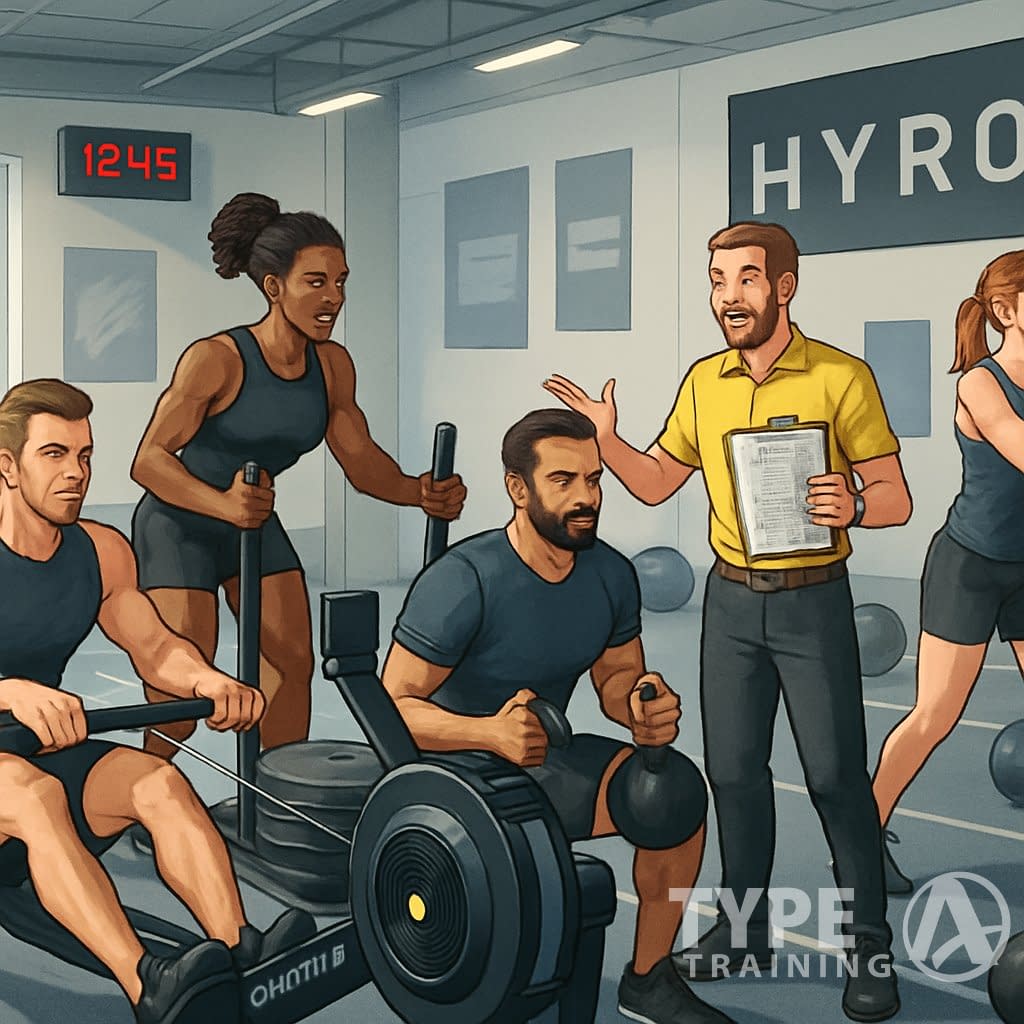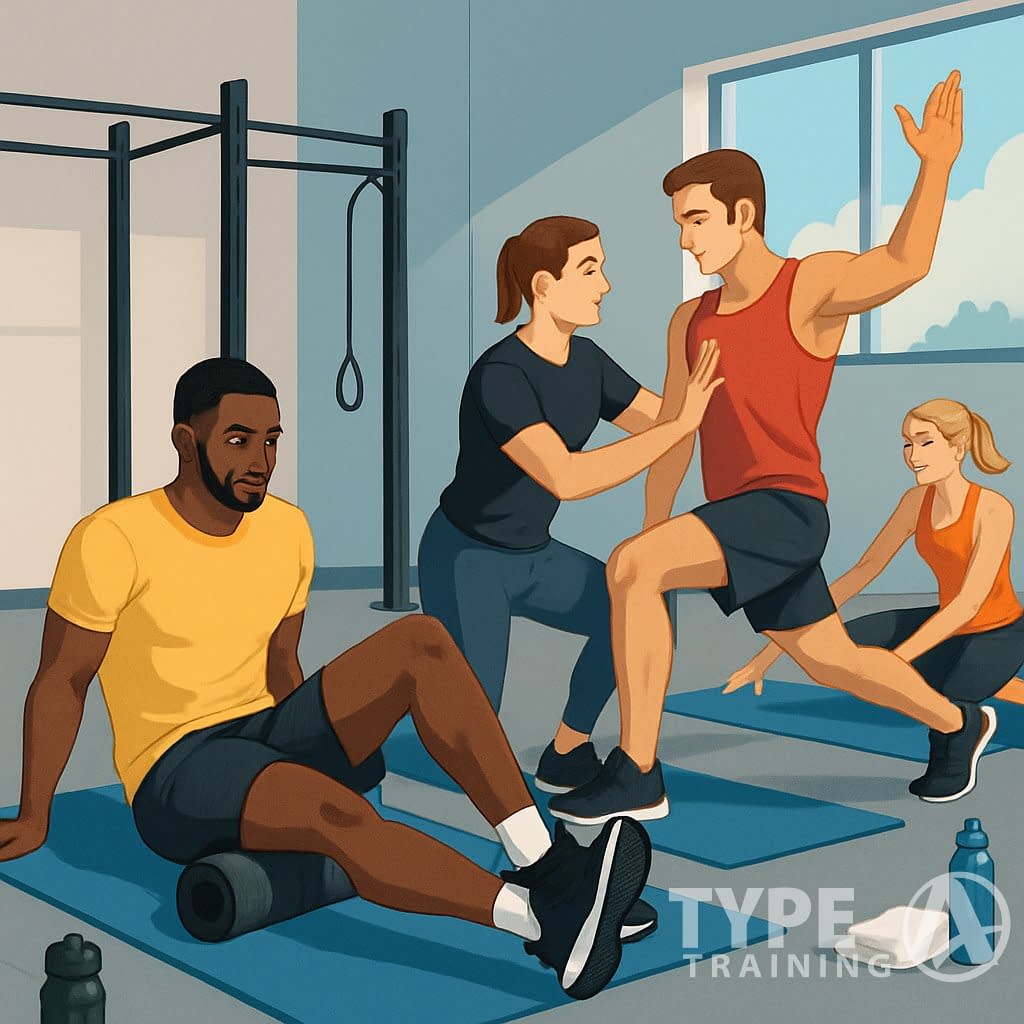Training for a HYROX race isn’t just about running or lifting weights. The event mixes endurance, strength, and functional fitness, so your workouts should hit all three to improve your HYROX performance and maximize your HYROX performance in competitions.
To get race-day ready, you’ll need a balanced plan that builds running stamina, boosts strength for each station, and helps you move smoothly between them.
To enhance your HYROX performance, focus on integrating specific drills that mimic race conditions.

Popular posts:
You’ll face the same race format every time, which makes it easier to track your progress and tweak your approach. By practicing the actual movements—like sled pushes, rowing, and wall balls—alongside structured running, you’ll build the skills and conditioning to perform well even when you’re tired.
Recovery, mobility, and pacing strategies matter too. They keep you consistent and injury-free.
Key Takeaways
- Learn the structure and demands of HYROX to guide your preparation
- Focus on targeted workouts that build strength, endurance, and efficiency
- Support training with recovery, mobility, and smart pacing strategies
Strategies to Enhance Your HYROX Performance

HYROX combines endurance running with functional fitness exercises in a set format. You’ll face the same sequence of stations at every event, making it easy to measure your progress and compare results to enhance your HYROX performance.
Tracking your HYROX performance over time helps you adjust your training strategies appropriately.
The structure, divisions, and participation choices give you clear options for how to compete.
What Is HYROX?
HYROX is a global fitness competition that blends running with functional workout stations. Each race tests both endurance and strength, and the challenge stays consistent no matter where you compete.
Unlike obstacle course races, HYROX happens inside arenas, so there’s no outdoor terrain or wild surprises.
You’ll run 8 kilometers total, broken into 1-kilometer segments. Between each run, you hit one of eight functional stations.
These stations include sled pushes, sled pulls, rowing, wall balls, and burpee broad jumps.
Anyone can enter, and the format is always the same. Beginners and advanced athletes compete in the same style of race and can track their progress over time.
Understanding your HYROX performance can guide your training and help you achieve personal bests.
HYROX Race Format Overview
The HYROX race follows a fixed pattern: 1 kilometer of running, then a workout station, and repeat that eight times. You’ll cover 8 kilometers of running and tackle 8 stations.
Race sequence example:
| Segment | Activity |
|---|---|
| 1 | 1 km run |
| 2 | Sled push |
| 3 | 1 km run |
| 4 | Sled pull |
| 5 | 1 km run |
| 6 | Burpee broad jumps |
| 7 | 1 km run |
| 8 | Rowing |
| 9 | 1 km run |
| 10 | Farmers carry |
| 11 | 1 km run |
| 12 | Sandbag lunges |
| 13 | 1 km run |
| 14 | Wall balls |
The Roxzone is the transition area between the run and the workout station. Move through it quickly but don’t burn yourself out—energy management is key.
The standard order means every athlete faces the same test, so you can compare results fairly across all HYROX races.
Divisions and Participation Options
HYROX offers several divisions so you can pick what fits you best.
- Individual Open: Good for first-timers. You do the full race at standard weights and distances.
- Individual Pro: For advanced athletes. Same format as Open but heavier weights at stations.
- Doubles: Teams of two split the work. Both partners run each kilometer together, then divide the stations however they want.
- Team Relay: Four athletes divide the race. Each person runs 2 kilometers and does two workout stations.
You can go solo, team up with a friend, or join a group. HYROX keeps things flexible so both casual and competitive folks can join in.
Essential HYROX Exercises and Stations
Incorporating varied exercises is crucial for optimizing your HYROX performance.
Each HYROX station challenges a different part of your fitness. You’ll need good technique, smart pacing, and quick transitions to do well across strength, endurance, and functional movements.
SkiErg Technique and Training
The SkiErg kicks off the race and really sets the tone. It mimics double-pole skiing, working your lats, core, and legs. Clean form here keeps you from wasting energy right out of the gate.
Stand with your feet shoulder-width apart and knees slightly bent. Drive the handles down using your hips and lats, not just your arms.
Focus on a strong hip hinge and a quick recovery on the return.
Mix intervals on the SkiErg—try alternating between 250m sprints and steady 500m efforts. You’ll learn how to manage your pace and keep your heart rate steady.
Sled Push and Sled Pull Preparation
The sled push and sled pull are easily two of the toughest HYROX stations. They need leg drive, grip strength, and solid coordination. The heavy load taxes your heart and lungs, too.
To master the sled push and pull, drills tailored to enhance your HYROX performance are beneficial.
For the sled push, stay low with your hands on the poles. Drive through your legs using short, powerful steps. Don’t stand upright—it kills your force on the sled.
The sled pull is all about a strong stance and steady hand-over-hand pulling. Brace your core, step back as you pull, and keep your grip solid.
Train with heavy sled pushes on turf, weighted drags, and rope pulls. Mix heavy days with lighter, faster efforts to build both strength and efficiency.
Burpee Broad Jumps and Rowing
Burpee broad jumps mix explosive power with endurance. Each rep needs a push-up, a jump forward, and a quick reset. Go out too hard, and you’ll burn out fast.
Keep your burpees smooth and steady. Land softly and avoid over-jumping. Short, controlled jumps usually save more energy than trying to leap as far as possible.
Rowing on the machine is all about rhythm and efficiency. Push with your legs, hinge at the hips, then finish with your arms.
Keep your strokes per minute steady instead of rushing. Try 500m to 1000m intervals with short rests. Pair rowing with burpees in workouts to practice transitioning while tired.
Farmer’s Carry, Sandbag Lunges, and Wall Balls
The farmer’s carry tests your grip, core stability, and posture. Hold the weights close, walk with small, controlled steps, and don’t lean forward. Dumbbells or kettlebells work well for training this.
Sandbag lunges challenge your lower body and balance. Keep the sandbag on your shoulders or back, step forward with control, and keep your chest up. Practice both bodyweight and weighted lunges to prep.
Wall balls come at the end and demand focus when you’re exhausted. Squat to parallel, then drive the ball up to the target. Use your legs for power, not just your arms.
Train wall balls in sets of 10–20 reps when you’re already tired from running or other moves. That way, you’ll be ready to keep your form clean even when you’re gassed.
Building Your HYROX Training Plan
A solid HYROX training plan mixes structured weekly workouts, gradual increases in intensity, and tweaks based on where your fitness is right now. Balancing running, strength, and race-specific work helps you build the endurance and power you’ll need.
Structuring Weekly Workouts
Your week should have a mix of running, strength training, and HYROX-specific sessions. Running builds your engine, while strength training targets the main muscles you’ll use for sled pushes, lunges, and carries.
Here’s a simple setup:
- 2–3 running sessions (intervals, tempo, and long runs)
- 2–3 strength sessions (lower body, upper body, and core)
- 1–2 HYROX-specific workouts that combine running with race movements
Make sure to take at least one rest or active recovery day. Your body needs the downtime to adapt and stay healthy.
Progressive Overload and Intensity
To get better, you’ll need to gradually ramp up your training. This is called progressive overload—basically, you add small, steady increases to intensity, volume, or complexity over time.
For running, try making your long run 5–10 minutes longer each week or bump up your interval speed just a bit. For strength, add a little weight or an extra set once your current load feels manageable.
Race-specific workouts should get tougher, too. Shorten recovery time between running and functional movements to mimic race fatigue. Keep track of your progress so you can push without risking injury.
Adapting for Beginners and Advanced Athletes
Match your HYROX training plan to your fitness level. Beginners do well with a 12-week HYROX training plan that starts with easier runs, lighter weights, and more rest. Build a base before adding harder sessions.
Advanced athletes can handle more intensity and volume. They might train 5–6 days a week, add double sessions, and use heavier weights. Race-specific workouts at competition pace help them get ready for the real thing.
Adjust your recovery days if you’re feeling beat up. Consistency and gradual progress matter more than pushing too hard, no matter your level.
Key Training Methods for Race Day Readiness
You’ll want to build running endurance, improve full-body strength, and practice moving well even when you’re tired. Focusing on these areas helps you handle the HYROX combo of endurance and functional strength.
A well-rounded training schedule is essential for achieving peak HYROX performance.
Endurance Running and Intervals
Running makes up about half the race, so boosting your endurance is huge. Long, easy runs build your aerobic base and help you keep a steady effort. Aim for at least one run a week lasting 45–75 minutes.
Interval training builds speed and helps you recover faster. Alternate between short, hard efforts and light recovery jogs. Try these:
- 400m sprint → 200m jog (repeat 6–8 times)
- 3 minutes fast → 2 minutes easy (repeat 5–6 times)
Hill sprints add power and make you a more efficient runner. Mixing endurance runs with intervals means you’ll be ready for steady pacing and short bursts between stations.
Strength and Functional Training
Strength training gets you ready for sled pushes, pulls, and heavy carries. Use compound movements like squats, deadlifts, and lunges to strengthen your lower body.
Add presses, rows, and pull-ups for upper-body balance. These moves hit the big muscle groups and translate well to race-day tasks.
Functional workouts with kettlebells, dumbbells, and sandbags build grip and core stability. These tools mimic HYROX stations way better than most machines.
Focus on full-body strength and muscular endurance—not just maxing out on one lift. It’s about handling volume, not just brute force.
You can structure sessions as circuits or HIIT. Here’s a sample:
| Exercise | Reps | Rounds |
|---|---|---|
| Deadlift | 8–10 | 3–4 |
| Kettlebell swing | 15–20 | 3–4 |
| Burpee broad jump | 8–10 | 3–4 |
| Farmer carry (40m) | 2–3 | 3–4 |
Simulating HYROX Race Conditions
Practicing HYROX simulations teaches you to transition between running and functional stations. Run 1 km, then jump straight into an exercise like wall balls or sled push.
Repeat this cycle until you’ve covered several stations in a single workout. This feels a lot more like the real thing and reveals what pacing actually feels like.
You’ll learn how to manage your breathing and effort while tired. It’s a great way to test strategies—when to push, when to back off.
Start with shorter simulations, not a full race distance. Build up the volume over time.
Recovery, Mobility, and Injury Prevention
Your training only pays off if you recover well. Using active recovery, mobility work, and flexibility training cuts down soreness and improves movement quality.
These tools also lower your risk of injury and help you keep making progress without burning out.
Active Recovery and Stretching
Active recovery keeps blood moving without piling on extra stress. Go for light activities like walking, cycling, or swimming to flush out your muscles and speed up repair.
On rest days, pick low-intensity movement instead of just sitting around. It really does make a difference.
Stretching matters after workouts. A cool down with 5–10 minutes of easy cardio, then static stretches, helps reduce tightness.
Focus on big muscle groups—hamstrings, quads, calves, shoulders. Hold each stretch for 20–30 seconds, no bouncing.
Use dynamic warm-ups before training to get joints and muscles ready. Moves like leg swings, arm circles, and hip openers boost circulation and cut down stiffness.
Doing both warm-up and cool-down routines supports performance and lowers injury risk.
Foam Rolling and Muscle Recovery
Foam rolling is a simple way to help muscles recover. You use your body weight to press against the roller, which releases tight spots and improves mobility.
It can cut down soreness and make it easier to move in your next session. Spend 1–2 minutes on each big muscle group—quads, calves, glutes, upper back.
Move slowly and pause on tender spots, keeping your breathing steady. Don’t roll over joints or bones—stick to the muscles.
Add foam rolling after training or on recovery days. Pair it with stretching or mobility drills for a bigger effect.
A lot of athletes also like to roll before workouts, since it improves range of motion and preps muscles for action.
Yoga and Flexibility Work
Yoga helps with flexibility and recovery by mixing stretching, balance, and controlled breathing. Regular sessions improve hip, hamstring, and shoulder mobility—super useful for sled pushes, lunges, and wall balls.
Just 15–20 minutes a few times a week can make a difference. Poses like downward dog, pigeon, and low lunge target the spots that get tight from HYROX training.
Holding these positions builds flexibility and stability.
Yoga also teaches better breathing and helps you chill out. That’s good for your nervous system and muscle recovery.
Adding yoga to your routine complements strength and endurance work without adding high-impact stress.
Optimizing Race Day Performance
Tiny details—like grip, mindset, and fueling—can be the difference between steady progress and burning out early. If you pay attention to these things, you’ll keep your pace, save energy, and handle the physical and mental grind of the event.
Grip Strength and Technique Tips
A strong grip keeps you from wasting energy during sled pushes, pulls, and farmer’s carries. If your grip gives out, your bigger muscles can’t do their job.
Work on dead hangs, farmer’s walks, and kettlebell holds to build grip endurance.
Try a hook grip or mixed grip for heavy carries to take some load off your forearms. Keep your shoulders engaged and don’t squeeze too hard—over-gripping burns your hands out fast.
For sled work, put your hands lower on the handles for better leverage. When doing wall balls or rowing, relax your grip a bit and let your bigger muscles handle the work.
Tack on short grip drills at the end of workouts to prep for late-race fatigue. Even small grip gains can save you time and energy over several stations.
Mental Preparation and Focus
Mental prep keeps you calm when you’re tired. Break the race into smaller parts so you’re only thinking about the next run or station—not the whole event at once.
Effective mental preparation can directly influence your overall HYROX performance.
This keeps stress down and effort steady.
Practice visualization: walk through each station in your mind, picture your form and breathing, and see yourself moving smoothly between exercises. It sounds a little cheesy, but it really does build confidence and helps you stay calm when things get tough.
Use short, repeatable cues like “steady pace” or “drive with legs” to reset your focus when things get rough.
Breathing control matters too. Aim for steady nasal or belly breathing during runs to keep your heart rate in check.
Controlled breathing supports both your aerobic capacity and your concentration.
Hydration, Nutrition, and Electrolyte Balance
Hydration and fueling strategies really shape your endurance and recovery. It’s better to drink water steadily in the hours before the race, not just during the event.
Proper hydration is a key factor in sustaining your HYROX performance throughout the race.
During the race, take small sips of electrolyte drinks to replace sodium, potassium, and magnesium lost in sweat. These minerals help keep your muscles working right and can lower the chance of cramps.
Incorporating electrolyte drinks can significantly enhance your HYROX performance during the event.
Stick with nutrition that’s simple and familiar. Eat a light meal with carbs and a little protein about 2–3 hours before you start.
Understanding the right nutrition strategy can boost your HYROX performance and recovery.
Skip heavy or unfamiliar foods so you don’t risk an upset stomach.
If your race goes longer than 90 minutes, try quick carbs like gels or chews between runs. Just make sure you’ve tested these in training—you don’t want surprises on race day.
Experimenting with quick energy sources can optimize your HYROX performance during longer races.











